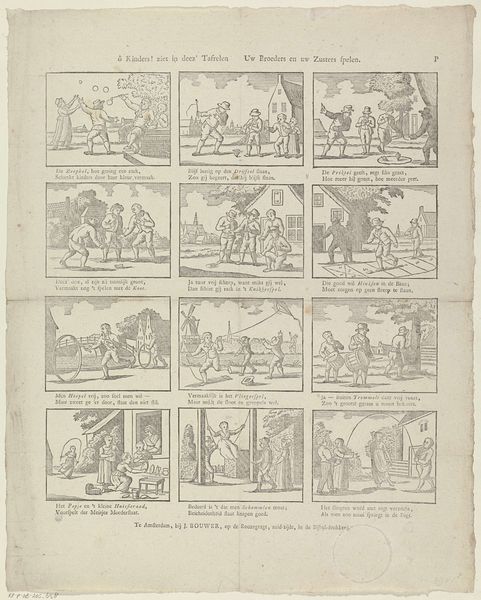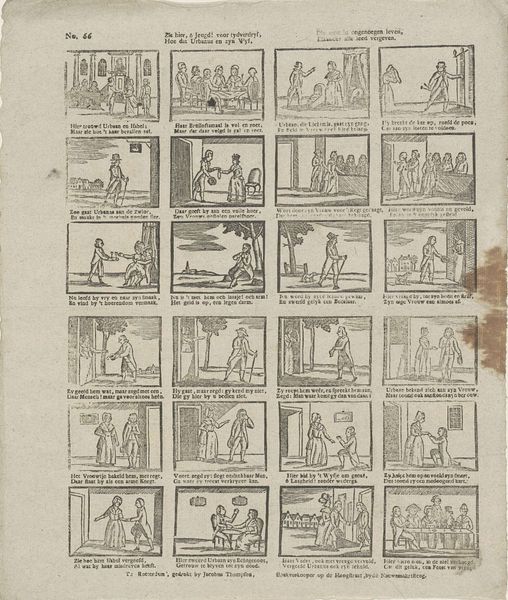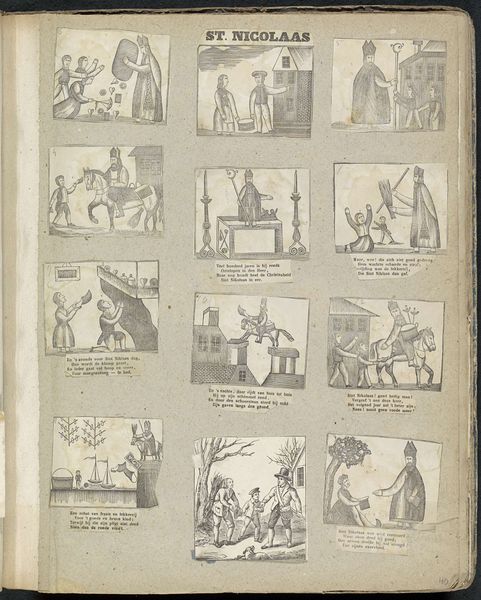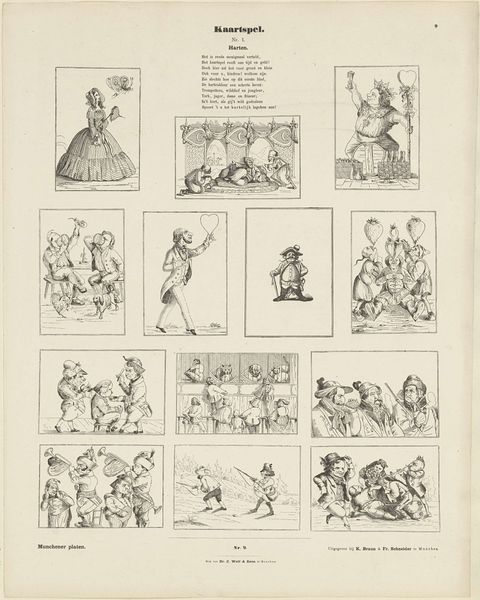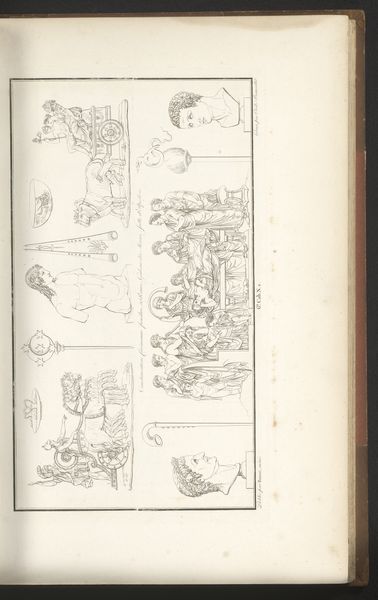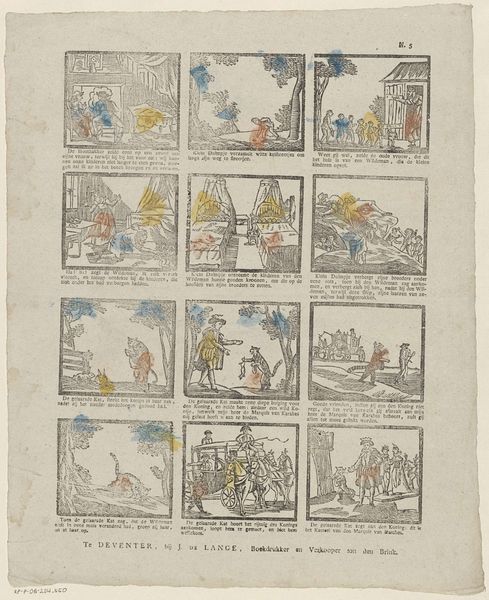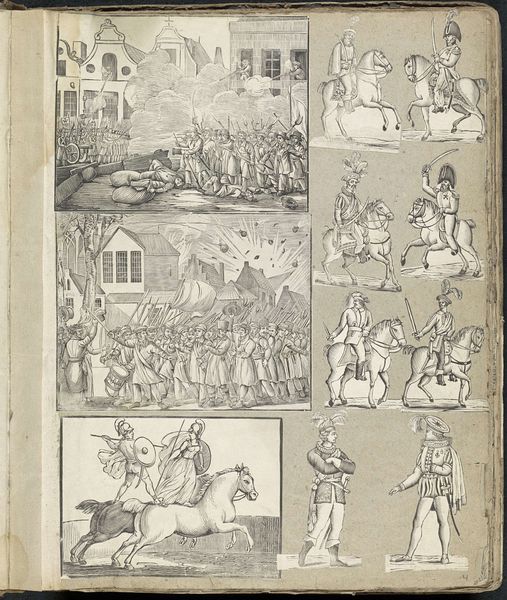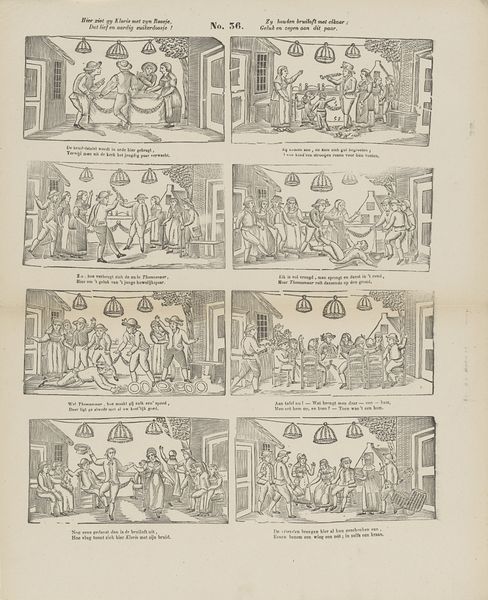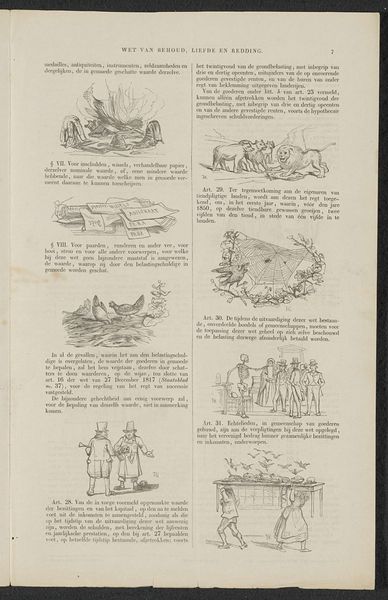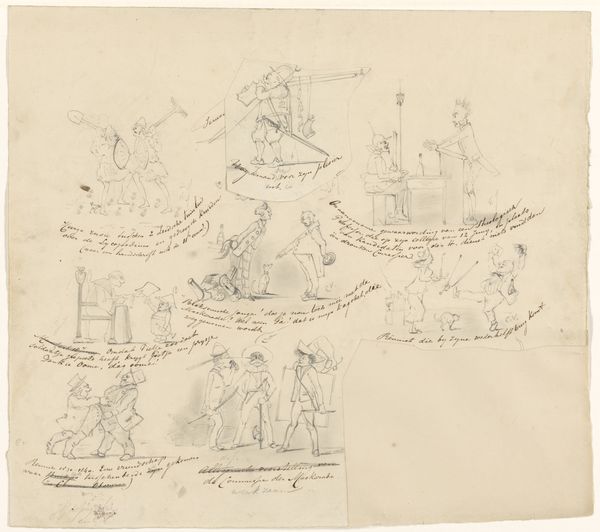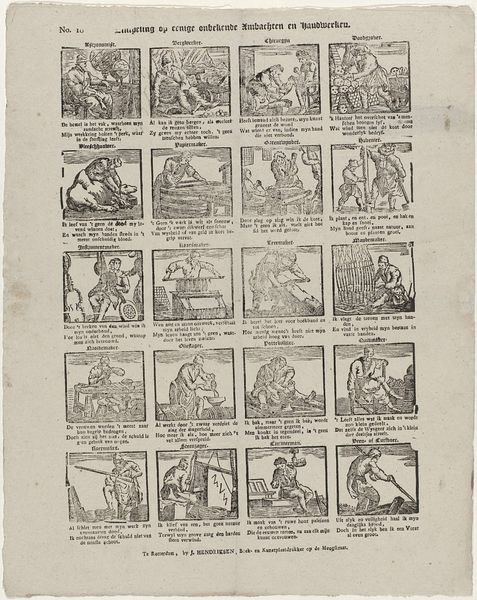
drawing, graphic-art, print, pen
#
drawing
#
graphic-art
#
comic strip sketch
#
quirky sketch
# print
#
caricature
#
sketch book
#
figuration
#
personal sketchbook
#
idea generation sketch
#
sketchwork
#
comic
#
sketchbook drawing
#
pen
#
history-painting
#
storyboard and sketchbook work
#
sketchbook art
#
initial sketch
Dimensions: height 605 mm, width 460 mm
Copyright: Rijks Museum: Open Domain
Curator: Looking at this “Spotprent in Leidse studentenalmanak, 1869"—that's "Cartoon in Leiden student almanac, 1869"— it feels like stumbling into a secret society’s inside joke. The lines are simple, but oh-so-expressive. I'm captivated! What catches your eye? Editor: I'm immediately struck by the relentless visual storytelling. The piece reminds me of a comic strip—before comic strips really existed! Here we have twelve distinct panels all neatly arranged. Do you think it’s satirical in its intent, would you say? Curator: Oh, undoubtedly! There’s a definite playfulness in how the anonymous artist uses caricature. These scenes of student life feel cheeky and critical. Editor: This image offers a window into the world of student life. It served a specific social purpose. Almanacs were designed to reflect—and shape—student identity. The sketches offer up contemporary social commentary on student life, the dynamics between different groups within the university, and the shared experience of belonging. What kind of story do you imagine being spun in these panels? Curator: To me it's a narrative about tradition versus change, or maybe about navigating the chaotic transition from adolescence to adulthood. See how each figure embodies some kind of exaggerated ideal. What's clear to me is that even back then, college was this confusing, intense incubator for figuring out who you are, but more pressingly *who to be*. Editor: The layout reminds me of broadside ballads. Cheaply produced and widely disseminated, broadsides provided an outlet for political commentary. Almanacs themselves were designed for mass distribution and would have shaped the public imagination and understanding of social hierarchies. So, who gets to decide what's normal or expected in a community? How are those ideas spread and enforced? Curator: That’s a poignant angle—you’ve just unlocked a new viewing experience! This takes me away. Thank you for that fresh perspective. Editor: My pleasure. Thinking about the politics of the everyday helps me understand historical artifacts more fully, and how they impact us still today.
Comments
No comments
Be the first to comment and join the conversation on the ultimate creative platform.
